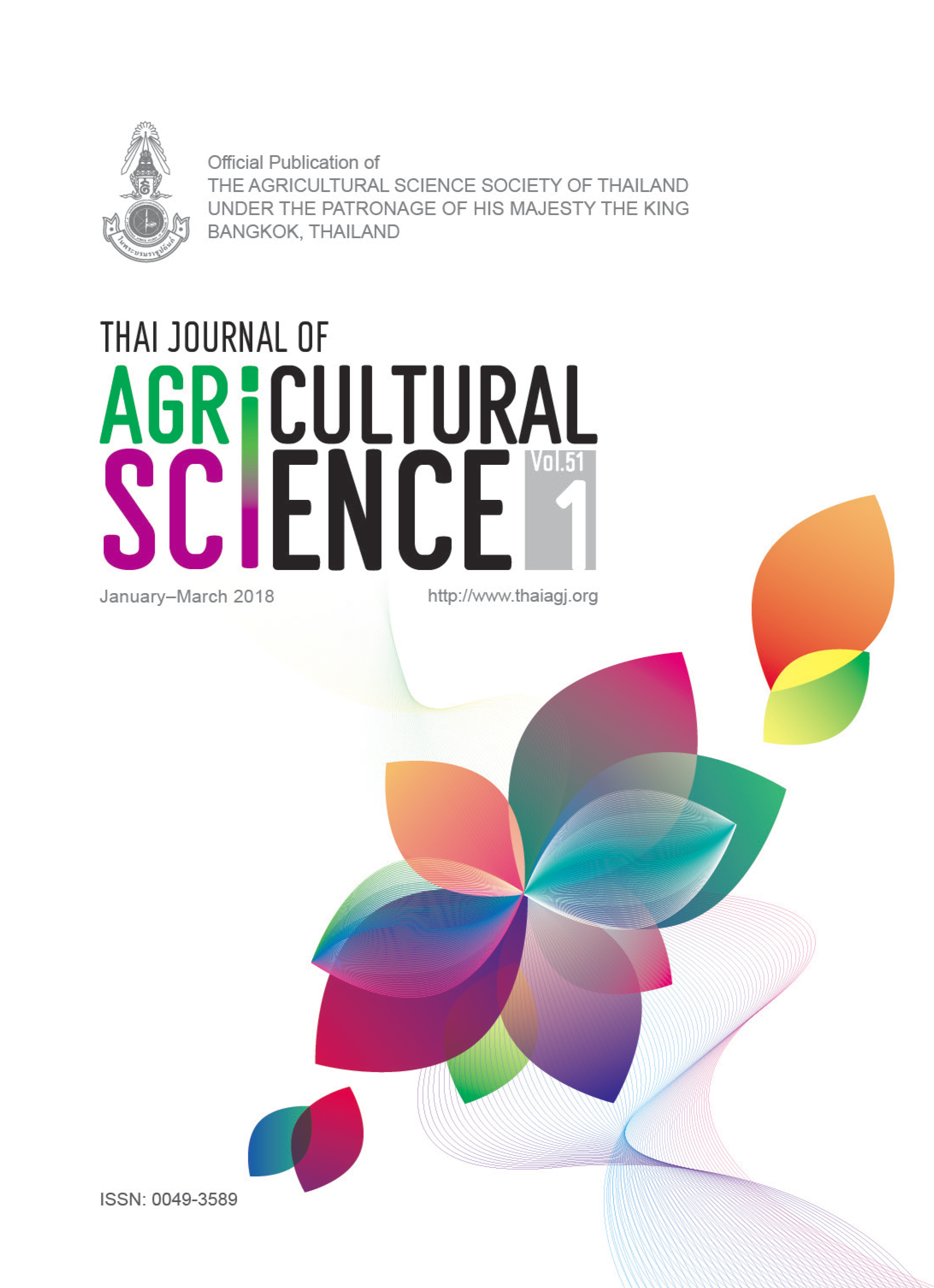An Investigation on Polyploidy Induction and Verification of Kram Ngo Plants (Indigofera suffruticosa) for Biomass Production in Northeast Thailand
Main Article Content
Abstract
Two experiments were carried out at Sakon Nakhon Rajabhat University, Thailand during the 2015 aiming to induce more of polyploidy plants for biomass production by treated the two days germinated seeds of the Kram Ngo crop (Indigofera suffruticosa) with different levels of colchicine chemical, i.e. 00, 0.10, 0.20, and 0.40 % plus 6 and 12 hours soaking durations. With Experiment 1, it consisted of eight treatments and each was replicated 6 times. A Completely Randomized Design (CRD) was used. At fifteen days after germination, the seedlings were classified by naked eyes for percentages of abnormal and normal seedlings. At day 30 after germination, the seedlings were subjected to Flow Cytometry Analysis for an identification of polyploidy plants. With Experiment 2 at day 31, the Kram Ngo seedlings of diploid, mixoploid and tetraploid plants were transplanted into polythene pots and each of them was used as a treatment, i.e. three treatments were used. A CRD with 8 replications was used. The results of the Experiment 1 showed that 100% of normal seedlings were attained with T1 and T2 (control treatments, i.e. without colchicine chemical). It was found that soaking seeds of Kram Ngo crop for 6 hrs at a rate of 0.10% colchicine solution, it gave the most appropriate amount of polyploidy plants where it gave the percentages of 60 and 40 for tetraploid and mixoploid plants, respectively. Thus, colchicine chemical treatment significantly induced polyploidy plants of the Kram Ngo crop yet at a rate of 0.40% colchicine and treated for 12 hrs, it gave 100% diploid plants. The results of the Experiment 2 revealed that plant heights, numbers of compound leaves and numbers of branches of the tetraploid plants were significantly lower than that of the diploid plants but similar to the mixoploid plants. However, leaf areas of the leaflets of the tetraploid plants were highly significant over the control treatment (diploid plants). Similarly, Fresh weights of the leaflets of the tetraploid plants were also significantly higher than the diploid plants. Some important prospects in increasing biomass production were discussed.


